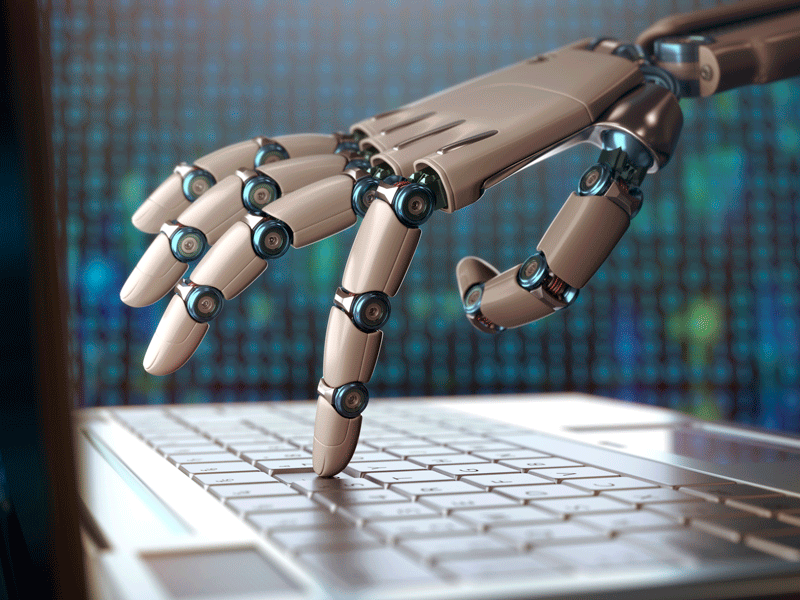
For decades the global financial services industry was stuck in its ways, unwilling to adapt or change its processes and becoming increasingly inefficient as a result. However, the advent of computing and Artificial Intelligence (AI) in the early 80s set off a chain reaction in the industry that led to the significant shake up we are still seeing today.
With large data sets and vast, complex global markets, the financial services industry is ripe for innovation
With large data sets and vast, complex global markets, the financial services industry is ripe for innovation, especially the adoption of AI. Furthermore, an increasing demand from consumers for improved experiences, efficiency and transparency has resulted in an increased need to adopt emerging technology.
1 – Increase efficiency
Decision-making in traditional trading was historically based purely on human intuition and years of experience of the markets. However, it was clear that the process could be made much more efficient. As such, automation was harnessed in the industry in the form of trading-bots; algorithmic programmes that automate trade executions based on an underlying set of rules.
Based on the earliest rule-based systems, where both market and fundamental data, such as price and volume information and public information on the traded assets, is analysed, these bots are still widely in general use. They have transformed the markets, bringing increased efficiency by enabling many more trades to be made in a shorter amount of time than previously possible.
2 – Trade commodities
Efforts to further refine these original trading-bots and increase the efficiencies already seen have led to the industry investing heavily in true AI and machine learning programmes. Through harnessing industry experts’ knowledge, as well as creating trading systems that enable AI to play a larger role in the process, the industry is seeing one of the biggest shake-ups since the introduction of computers.
One of the best examples of this is seen in the trading of commodities. Whether energy, food or metals, trading commodities is an important way of diversifying a portfolio beyond traditional securities to improve return on investment. Able to analyse great swaths of data, both environmental and historical, commodities trading with AI algorithms involves a diverse set of trading strategies that are developed, implemented and fine-tuned to optimise returns. Varying in scope and specialisation, together they create a holistic and reliable approach, previously unattainable when using only human traders.
3 – Democratise access
For decades, AI and machine learning algorithms, along with other leading technologies, were exclusively kept in the realm of the top global investment bankers and hedge funds. However, we are starting to see a democratisation of AI technology, enabling everyday consumers to harness this powerful technology for themselves. The increase of open-source projects have made these software programmes available to the masses.
Take commodities trading as above, it used to be that the average investor rarely chose this as a form of investment as it requires large amounts of expertise, time and money. However, the democratisation of AI and machine learning algorithms are opening the doors to trading in commodities to those who were previously unable to do so.
4 – Open up cryptocurrency trading
AI-based algorithms have also enabled successful trading in nascent and inefficient markets like cryptocurrency. Significantly less predictable than traditional markets, the cryptocurrency market does not have a value that is steadfastly defined and as such it is prone to volatile swings, both up and down.
In this wildly volatile market, data analysis and AI holds the key to unlocking the fast-changing dynamics. While humans are vulnerable to emotions running high and clouding their judgement, algorithms do not have this problem, and can work dispassionately for almost continuous periods of time. Further, AI algorithms are able to identify trading signals that humans cannot recognise, especially in markets that are depressed by blind pessimism as is often the case in cryptocurrency.
5 – Reduce trading risk
AI-driven algorithms are also able to avoid high risk margins and inefficiencies that invariably come about when humans influence trading, especially in overheated markets. Further, they can detect, analyse and act on any anomalies in the market, when they are in infancy, to counteract market manipulation; reducing the chance of being caught off guard or making the wrong investment call.
Harnessing AI also removes the risk of human error; strategies that would take around 300 financial analysts to create can be done by one AI in 48 hours. By replacing gut instinct with facts and artificial, data-based intelligence, the entire trading process is streamlined when in nascent and volatile trading markets.
Undoubtably, AI will continue to bring significant improvements to the financial services industry over the coming years. As AI and machine learning algorithms become even more sophisticated, they will permeate into more areas of the industry, bringing democratisation and opportunity of investment to the masses.


